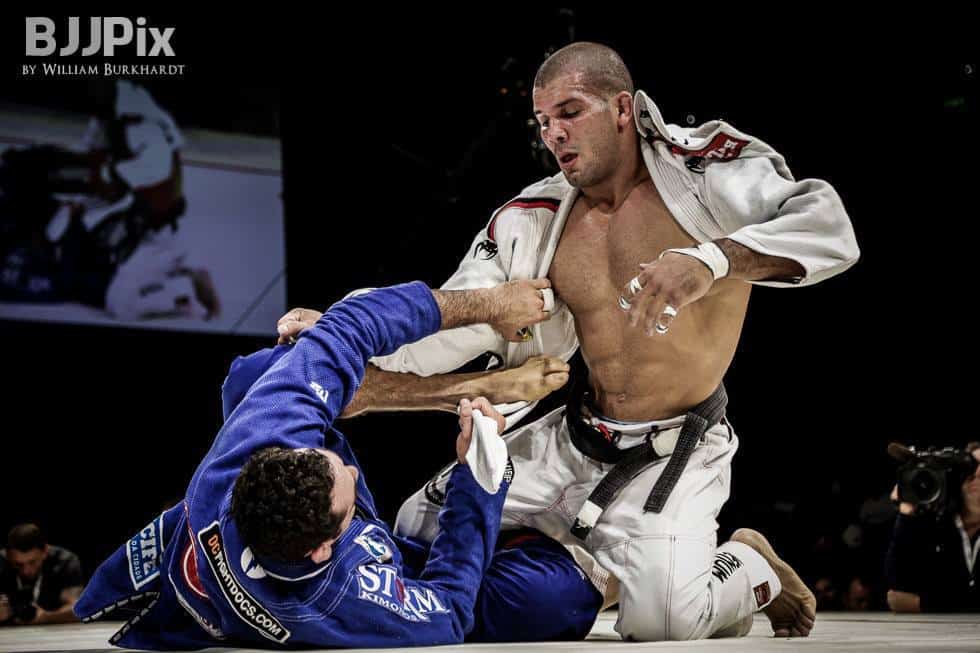How to Pass a Complicated Guard
Modern Jiu-Jitsu has been increasing in complexity, especially in the guard work. The latest innovations are focused primarily around lapel grips, which have (temporarily) confounded the BJJ community

Like anything complicated, we have to “chunk” the material down into smaller, more manageable pieces.
Guard Passing is actually three stages.
- Unwinding / Grip Breaking
- Clearing the Legs
- Securing the Dominant Position
Unwinding
Jiu-Jitsu students always ask
How do I pass the ________ Guard?
(a) De La Riva
(b) Reverse De La Riva
(c) Spider Guard
(d) Lasso Guard
(e) Deep Half Guard
(f) Worm Guard
etc.
This is a somewhat inaccurate question. What students are actually asking is “How do I break the grips that are on me?”
*by grips, I mean feet & legs as well as hands & arms.
Each guard is defined by a particular set of grips and grip sequences. The process of removing your opponent’s grips and getting your grips is what I refer to as unwinding.
The first unwind you ever learned was probably from the top of guard . Your instructor probably told you to remove your opponent’s hand from your collar before starting to open the guard. If you don’t remove the collar grip, you give your opponent more opportunities to attack as well as defend the later stages of guard passing. This same cause and effect relates to other “more advanced” guard positions.
Clearing the Legs
The actual clearing of the legs are the techniques most commonly referred to as guard passing.
Knee Cut
Under-Over
Double-Under / Stacking
Leg Drag
Long Step, etc.
But as everyone knows – its probably easier to hold a pissed off cat than an upper belt who’s legs you’ve just cleared. Which brings us to part 3.
Example of Clearing the Legs & Securing Dominant Position
A very different approach to Clearing the Legs
World champion Aarae Alexander vs World Champion Tye Murphy. #worlds2015 #ibjjf #JiuJitsu #rolypoly A video posted by Crazy 88 MMA (@crazy88mma) on
Securing the Dominant Position
As a Blue Belt, I distinctly remember how hard I thought it was to hold a person down after the pass. They would ALWAYS turtle. I could clear the legs but it was so difficult and energy consuming to hold the person down or to actually get the back.
These are fundamental movements that are used after you’ve cleared the legs, but the individual is still resisting the pass. For the competitors, this is the step when done wrong, you end up with an advantage but not any points.
To do this well, you must train back takes as well as dominant top position transitions such as side-mount, mount, knee-on-belly, etc. Don’t limit yourself by only choosing to take the back or only trying to secure side-mount. You often will not get a choice as to how your opponent reacts once you clear his legs – some will turn in, some will turn out, some will lead with legs, some will lead with arms.
Successful Leg Clearing with Failed Securing Dominant Position
Notice that Guard Passer has to Remove the Collar Grip Before Initiating The Leg Clear
A Video about Securing Dominant Positions via Side Switch
Additional Tips on Guard Passing
Certain guards are responses to particular guard-passing systems. For example, worm guard is primarily a response to a knee-cut or bull-fight passer. You’ll be able to avoid a lot of that guard’s strengths by passing a different way i.e. passing from the knees.
Be able to pass to both sides.
Don’t be reactionary unless you are forced to be. You should have the jump on your opponent as the top man since they have to pull into a guard. They should be forced into the 2nd stage of guard pass (defending your leg clearing) rather than you being pulled into stage 1 (unwinding their grips).